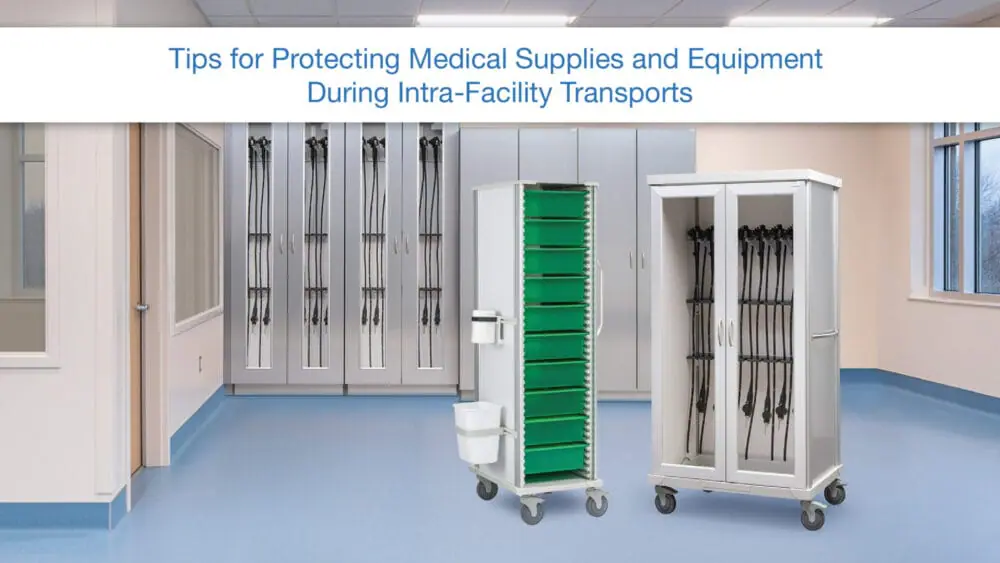
Healthcare facilities follow medical supply storage guidelines provided by the Joint Commission, the CDC, or other medical associations.
Industry guidelines include instructions to store supplies:
- in closed or covered carts, bins, or drawers,
- away from water sources, such as beneath drains,
- away from walls and ceilings and at least 8-10 inches off the floor, and
- in a humidity and temperature-controlled environment to prevent condensation from collecting on packaging.
These guidelines cover how supplies are to be stored, but how should supplies and equipment be transported so that cleanliness and sterility are maintained?
The Hazards of Transporting Medical Supplies
Here are some examples of what can go wrong when medical supplies go traveling:
- Holes and tears in packaging can occur if the supplies are improperly packaged or placed next to sharp corners or loose instruments.
- Stacking supplies creates pressure that can tear packages or damage the contents.
- Exposure to moisture can create an environment that attracts pathogens and encourages biofilm to form.
- Dirty transport carts or bins can contaminate packaging; dirt may transfer to the contents or into clean areas.
When considering medical transport cart options, choose a transportation environment that closely mirrors the ideal storage environment.
For example, the CDC guidelines state to store medical supplies away from sinks or areas where they may come into contact with moisture. When transporting medical supplies, the cart and bins should be thoroughly dry and not used to transport wet materials or liquid containers that could leak.
Best Practices for Transporting Supplies
Transport Carts
- Use carts and bins that are clean, dry, and covered.
- Choose carts with rounded edges to prevent supply packages from becoming damaged.
- Choose carts with rounded corners that are easy to clean.
- Choose colored carts or bins to help staff identify clean vs dirty carts.
- Use bins with covers to ensure that clean contents remain clean and dirty contents remain contained.
Before Loading Carts
- Inspect medical supplies and equipment for signs of wear, tears, holes, wetness, discoloration, and dirt. If any of these are visible, send the package for reprocessing or dispose of it, as appropriate.
- If equipment is broken or dirty, contact the maintenance department.
Loading Carts
- When placing supplies on the transport cart, do not stack heavy items on light packages.
- Do not overload the cart or bins.
- Do not try to squish down packages to make room for more.
- Do not place packages where they may fall off the cart, such as above the top of bins or loose on top of the cart.
- Do not transport packaged supplies with items that could compromise the integrity of the packaging, such as sharp instruments or wet materials.
During Transportation
- Do not move dirty materials through a clean area and or clean supplies through a dirty area
- Do not mix clean and dirty supplies on the same cart
Maintenance Matters
- Develop a cleaning schedule for all transport carts and bins
- Do not reuse a dirty cart until it has been cleaned, disinfected, and thoroughly dried
Procedures for transporting supplies and equipment throughout a facility should be part of your overall plan to reduce healthcare-associated infections.
As a first step, choose quality medical carts that are easy to clean, constructed for safety, and designed to protect supplies.

Cindy Blye
Content WriterCindy Blye, BSN, RN, CCM is a Registered Nurse and Certified Case Manager. She is an Alumni of West Virginia University School of Nursing (BSN), and a member of the Association of Health Care Journalists and The Authors Guild.
